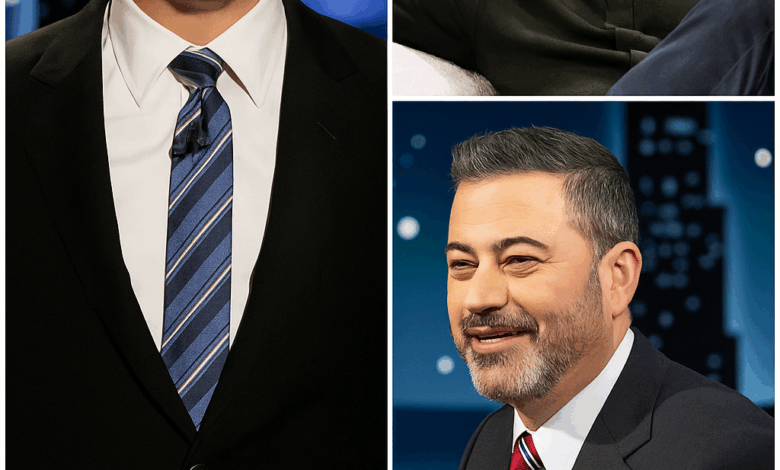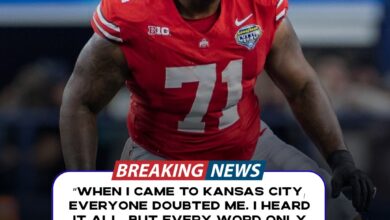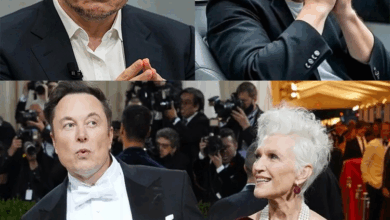3S. The Surprise Winner in the Jimmy Kimmel Suspension Saga


When Jimmy Kimmel returned to his desk after his headline-making suspension from ABC, the story seemed, at first, to be all about him. The host had weathered controversy, corporate backlash, and partisan attacks — and now he was back, greeted by record-breaking broadcast ratings and a wave of fan support.
00:00
00:00
01:31
But according to new data shared this week, the biggest winner of the entire saga wasn’t Kimmel, ABC, or even late-night television itself. It was YouTube.
At the MIA Market in Rome, Luca Forlin, YouTube’s Head of Business Strategy and Operations for EMEA, revealed that Kimmel’s comeback episode had generated one of the largest digital afterlives of any late-night event in recent memory.
While ABC’s live broadcast drew Kimmel’s best linear ratings in over a decade, YouTube’s numbers eclipsed even that — by several magnitudes.
The Viral Afterlife of a Broadcast
Speaking before an audience of producers and network executives, Forlin described the digital ripple effect of Kimmel’s return.
The official YouTube upload of Kimmel’s first post-suspension monologue racked up a staggering 22 million views within just two weeks of airing. That doesn’t include dozens of smaller clips — from highlights to reaction videos — that collectively pulled in millions more.
“For that single episode,” Forlin explained, “the show’s total audience across YouTube may have been four, five, even ten times larger than its live TV viewership.”
In essence, what began as a one-night broadcast for ABC turned into a global, weeks-long digital phenomenon.
The finding underscores a larger truth about entertainment in 2025: the afterlife of a television moment often matters more than the moment itself.
The Power of the “Multiplier Effect”
Forlin called it the “multiplier effect” — YouTube’s ability to extend the reach of traditional television far beyond the living room.
“That multiplier effect, four times, five times, six, even ten times, is what we observe day in and day out on live events,” Forlin said.
A decade ago, late-night television lived and died by the overnight Nielsen numbers. Now, it thrives or fades based on its second life online — where algorithms, social sharing, and recommendation loops keep the content circulating long after the network broadcast has ended.
For Kimmel’s comeback, that second life was enormous.
While his ABC audience numbered around 8.6 million viewers — a career high — the online audience dwarfed it, confirming that the future of late-night engagement lies not in traditional ratings but in cross-platform resonance.
A Case Study in Digital Redemption
Ironically, Kimmel’s suspension — initially seen as a career setback — became a masterclass in how digital platforms can transform controversy into momentum.
When ABC pulled Jimmy Kimmel Live! off the air for a week in September following his monologue referencing conservative activist Charlie Kirk’s death, the backlash was swift. Critics accused Disney of capitulating to political pressure; supporters rallied around Kimmel as a free-speech figurehead.
When he returned on September 23, audiences tuned in to see what he’d say — and he didn’t disappoint. His opening monologue was both defiant and self-aware, filled with equal parts sarcasm and gratitude.
That ten-minute speech, uploaded to YouTube hours later, became one of the site’s most-watched late-night clips of the year. It was shared widely on social media, dissected by pundits, and meme-ified across platforms.
Forlin’s presentation framed it as proof that YouTube can “amplify the cultural moment” in ways traditional TV can’t.
YouTube: From Competitor to Collaborator
For years, networks saw YouTube as a threat — a siphon for attention that could cannibalize live audiences. Now, it’s increasingly a partner.
Every major late-night show, from The Tonight Show to The Late Show, relies on YouTube to extend its brand and reach younger viewers who no longer tune in live.
What’s striking about Kimmel’s comeback is how clearly it illustrates this symbiosis. ABC’s broadcast gave YouTube content to amplify; YouTube’s virality, in turn, reenergized the ABC show’s cultural relevance.
“It’s not about competition anymore,” Forlin said. “It’s about amplification.”
In Kimmel’s case, that amplification transformed a moment of reputational recovery into a viral global conversation.
A Boost Against the Critics
The success of Kimmel’s online performance also rebuts months of claims from his detractors — particularly former President Donald Trump, who has repeatedly mocked the host’s ratings and even urged ABC to fire him.
Trump’s attacks — “a failing, no-ratings show,” as he put it — have become a running theme in Kimmel’s monologues. But the YouTube data tells a different story.
With more than 22 million views on a single video, Kimmel’s reach now exceeds the total audiences of many cable news networks. His YouTube subscriber base alone, numbering over 19 million, dwarfs the nightly viewership of Fox News’ Gutfeld! — the conservative counterpart that often competes with Jimmy Kimmel Live! for headlines.
By the numbers, the “no-ratings” narrative no longer holds up.
Redefining Late-Night Relevance
The bigger story isn’t just Kimmel’s individual success, but what it signals for the future of late-night television as a genre.
Traditional broadcast metrics — like Nielsen’s “Live+Same Day” ratings — no longer capture the full audience picture. Increasingly, networks and advertisers look at “Total Video Views,” encompassing streaming, social, and digital platforms.
In that ecosystem, late-night thrives not because people stay up until midnight to watch live, but because the next morning, millions click, share, and comment online.
Kimmel, Colbert, Fallon, Meyers, and even John Oliver have built entire digital ecosystems that generate far more impressions than their broadcasts. For YouTube, that means steady, advertiser-friendly content. For networks, it means survival.
“Late-night television doesn’t end when the credits roll,” says media analyst Laurie Starke. “It begins again when the clips hit YouTube.”
The Algorithm’s Sweet Spot
For Kimmel’s post-suspension monologue, the algorithm was practically built to make it explode.
The video had everything YouTube loves: high engagement, topical relevance, emotional tone, and controversy. Add Kimmel’s decades of late-night loyalty and an audience primed by curiosity, and you had a perfect storm for viral traction.
Within days, the clip spread across social media platforms and was embedded in thousands of articles and reaction videos. Each share, each comment, each meme created another feedback loop.
By the time ABC’s next episode aired, Kimmel’s words had been seen and discussed by tens of millions — many of whom don’t even watch broadcast television.
The Industry’s “New Normal”
Forlin’s remarks in Rome weren’t just about celebrating Kimmel’s success; they were a sales pitch for television’s digital future.
He described YouTube as a “bridge” between linear and online media — a platform where broadcasters can capture younger audiences without abandoning their legacy programming.
“The data proves that live events and late-night formats are more alive than ever,” he said. “They just live longer online.”
It’s an idea that Hollywood executives are increasingly embracing. Streaming services may have disrupted viewing habits, but YouTube remains the gateway for discovery — the platform where shows can reach casual audiences who don’t subscribe to traditional TV.
What It Means for Kimmel — and Late Night
For Kimmel personally, the digital win couldn’t have come at a better time. After a suspension that could have undermined his credibility, the viral success of his return flipped the narrative entirely.
Instead of being the late-night host “punished by Disney,” he became the comedian whose comeback dominated both television and the internet.
For ABC, it reaffirmed that even controversy can be converted into engagement when managed strategically. For YouTube, it validated its role as the essential partner in modern broadcast storytelling.
And for the late-night world at large, it offered a lesson: relevance isn’t measured at 11:35 p.m. anymore — it’s measured by the morning after.
Closing Thoughts
In the end, Jimmy Kimmel’s suspension saga says as much about media evolution as it does about the man himself. His critics may focus on fleeting TV numbers, but the metrics that matter most now live online — in shares, comments, and viral loops that never end.
Kimmel returned to prove a point about resilience. YouTube, it turns out, proved a bigger one about reach.
As Forlin summed up in Rome, “The future of television isn’t just on TV. It’s wherever people are watching — and increasingly, that means right here.”
For once, everyone — ABC, Kimmel, and YouTube alike — seems to agree.



